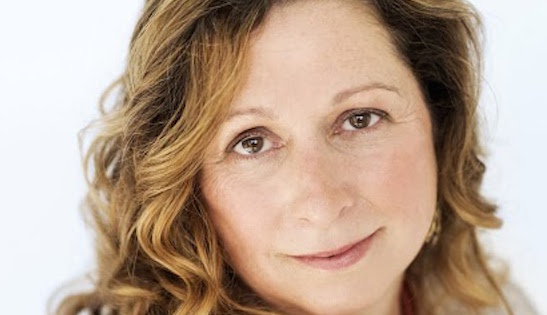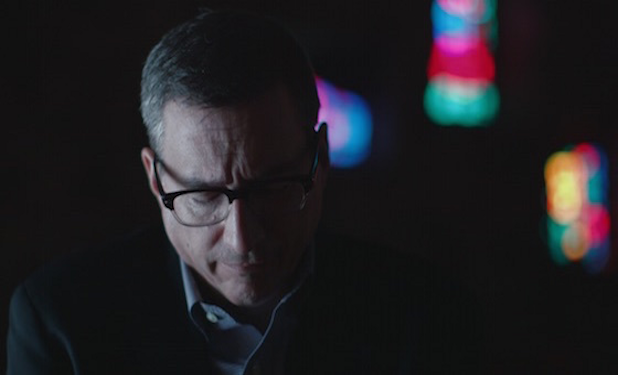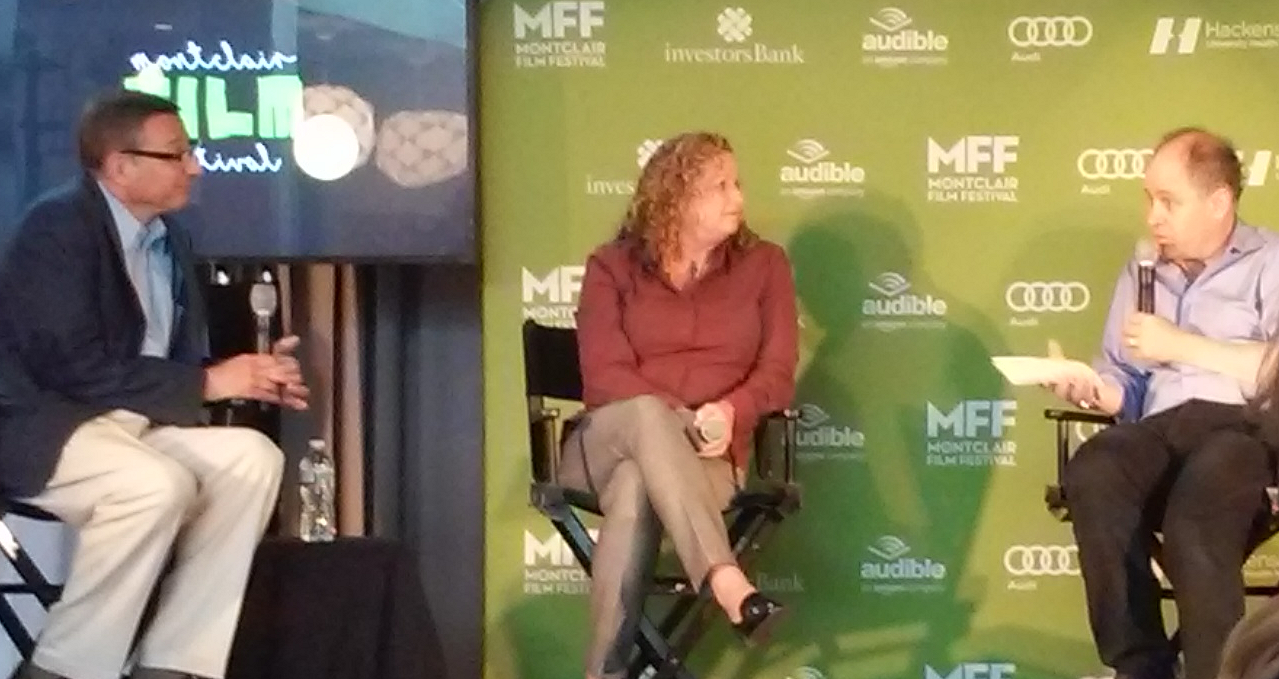In Conversation with Abigail Disney
Although heir of the famed Disney family and tradition, Abigail Disney didn’t set out to make films. She set out to make a difference. In a candid conversation about her life and the trajectory of experiences that led to her becoming a documentarian, she laid out the sociocultural and political factors as well as gender issues that informed her evolution. As part of Montclair Film Festival’s In Conversation series and moderated by Johnathan Alter, Disney painted an intimate portrait of her evolution as a volunteer, philanthropist, activist and eventual documentary filmmaker for two captivating hours.
Disney shared her love of film growing up with her grandfather, Roy Disney and great uncle, Walt, who was the producer of The Wonderful World of Disney Show. “It was cool,” she remarked how it struck her with awe whenever seeing his name in the credits. Yet on the other side, she also recounts that she got clear messages from her family that working in films was not “girls’ work.” Although never spoken, Disney recounted that her brothers would regularly be taken behind the scenes and given access to learning more about the technical and editorial aspects of film production. She was expected to comply with conventional gender roles.
So she left Hollywood.
And instead, Disney pursued her education. After attending Yale and Stanford, she continued with doctoral work at Columbia, achieving a PhD in English Literature. Her focus was on American historical war novels. She was particularly intrigued by the violence within them and why men wrote them, concluding it served as “A way for men to talk about themselves in a way where women weren’t listening.” This experience seems the impetus for Disney’s later work regarding women’s issues and filming women activists internationally. But in the interim, while writing her dissertation, Disney got a calling to enter and contribute to non-profit organizations. Doing volunteer work throughout NYC, creating with her husband the Daphne Foundation, as well as serving in several organizations and on various boards, Abigail situated her life as a means to change and improve the lives of others.
While being a mother of four.
Disney was plainspoken telling how she situated herself within her family life and volunteer work. Her children were her priority. So, to remain active in the non-profit sector she decided to “stay small and go deep.” To invest in the evolution of an organization, learning and understanding its interior.
While volunteering, Disney had an epiphany, drawing a connection between the myriad women she had been meeting on the frontlines of change. In many instances, they were the centripetal force of change-based movements. In a 2010 interview with Forbes.com, Disney found that, “As I worked with grassroots organizations [both domestically and overseas], I realized that all these women leaders had the same values and ethics….Women try to build for their entire communities. I began to realize–ahead of most people, I think–that women are the webs of relationships. When you strengthen women, you strengthen the world.” She has since been involved in creating and participating within grassroots organizations addressing women’s issues, and continues to invest and be involved in several other non-profit organizations.
It would be 2008 where Disney would bridge her activism with filmmaking. Self-funding her first documentary feature Pray the Devil Back to Hell, Disney chronicled the 2003 uprising of Liberian women and their nonviolent coalition against the civil unrest that devastated their country. Given the near-absent media coverage of the historically monumental event, Disney felt “These women deserve to be known” and the making of a film was Disney’s call to action. One of the activists in the film, Leymah Gbowee, would later become a 2011 Nobel Peace Prize recipient. Disney divulged that the film was not widely received at several film festivals given it was self-funded. However, it was accepted by the Tribeca Film Festival and won Best Documentary. The film led to Abigail being contacted by PBS to create a series chronicling the lives of women internationally within war-torn circumstances. In 2011, she produced Women, War and Peace, chronicling the lives of women and their resistance initiatives in Bosnia, Columbia, Afghanistan, and Liberia. Abigail produced this series informed by both a gendered and activist lens, quoting Gloria Steinem’s suggestion, “what if we did the film as if women matter?”
Firmly rooted in her calling to use film as a medium for examining the world and ourselves in it, Disney’s next films would take on politics, gun culture, and religion, taking on the role of executive producer to broaden the conversation. Among those she mentioned was Citizen Koch, a 2013 documentary chronicling the rise of the Tea Party and the stakeholders who financially impacted its growth, illuminating the brazenness of violating the separation of non-profits and political involvement.
In her newest film, Disney makes her directorial debut. Armor of Light captures an Evangelical minister examining his pro-life ideologies and pro-gun beliefs, and the impact of such introspection both on himself and the world at large. Reverend Rob Schenck’s journey occurs within the milieu of the United States’ fascination with firearms, gun violence, the exercising of the Second Amendment, the law of Stand Your Ground and its implications, and a mother’s embattled diligence in light of catastrophic loss.
With Schenck joining the stage, the conversation became very intimate, as both he and Disney discussed not only the content of film, but the heart behind it. Disney disclosed that she wanted to make a film about “the eroticism of violence in the American imagination,” describing its evolution in recent times as “like a sickness.” “You can really see it in gun culture.” Given the permeation of guns within the culture, Disney shared that she “wanted to make a film that makes a difference.” However, mindful that her views may polarize people, her approach to politics is “with an open heart.” Disney commented that underlying her political views and motives as a documentarian is that no matter the spectrum on which people fall on a given issue, even sensitive ones like guns, “we’re all good people.”
Schenck shared a lot of himself with the audience as if sitting with an old friend in a living room. He opened up about his own reservations about becoming involved with the movie, as well as the journey into his own consciousness. Schenck told us that early in the project, he allowed Disney to come to a dinner meeting with conservatives. He detailed the conversation as exploring moral and ethical questions of evangelicalism and guns, and was at first concerned about her being there. “Some of that listening was painful, but she endured,” he recounted, and he was moved “by her heart and listening.” Disney also shared that she witnessed Schenck being moved by her questions too, both during the movie and afterwards.
Schenck told about his experience of advocating clemency for a female Texas inmate on death row who became a born again Christian. His direct appeals to President Bush went unheeded. Yet her execution began gnawing at Schenck’s point of view about evangelicalism and the death penalty. The saving of life, whether from a prison’s execution chamber or muzzle of a gun, became pivotal when meeting and talking with Lucy Kay McBath, who also participated in the film. McBath is the mother of Jordan Davis, whose untimely death was triggered by a man irritated by the music he and his friends were playing, and sadly, used his gun as a means to turn down the volume.
Since the movie, Schenck continues to work in moving the conversation about guns within his own congregation and abroad. To situate their contemplations beyond a simple entitlement. However, by his accounts, the demographics of his congregation, mostly in their mid-fifties, can make such work daunting. But he notes there is a “tectonic shift in evangelism.” He explained that there is an evolving “consistent life movement” advocating the protection and sanctity of life against abortion, death penalty, and other social and cultural phenomena.
The question and answer portion of the talk explored a range of topics and ideas. When Disney was asked of her favorite scene in the movie, she shared it was the argument Schenck had with three associates during lunch, and how he handled himself. When asked about what they hope showing the movie will achieve, Disney hopes the film opens the conversation across political continuum about gun culture. Schenck disclosed that he hopes pastors become emboldened and “find the moral fortitude to push their congregations to talk.” He also hopes that the film and subsequent discussions about the issues housed within it help us as a collective recognize that our gun culture is the signal of a “moral, ethical crisis.” He hopes that by seeing the movie those in government suspend legislative and political debates, that the movie serve as a catalyst that shifts their thoughts and hearts, causing them to “tie [their agenda and actions] to the teachings of the Sermon on the Mount”. In so doing, “we could get farther”. Yet Disney contended she is less optimistic, believing legislation is not the answer because it will not cause a cultural shift. In her words, the gun culture is “the moral homework we never did.” Disney went on to give a history lesson about the impetus and underpinnings of the Stand Your Ground law in Florida and several other states, and the nuances of the reasonableness of threat.
Disney has a body of work that keeps growing.
And so does she.
Written by MFF Blogger Tanya Manning-Yarde
Website cited: Abigail Disney Isn’t Interested in Cinderella Stories. http://www.forbes.com/2010/08/19/abigail-disney-women-war-forbes-woman-power-women-documentary-film.html


